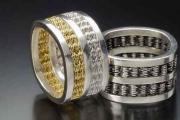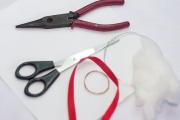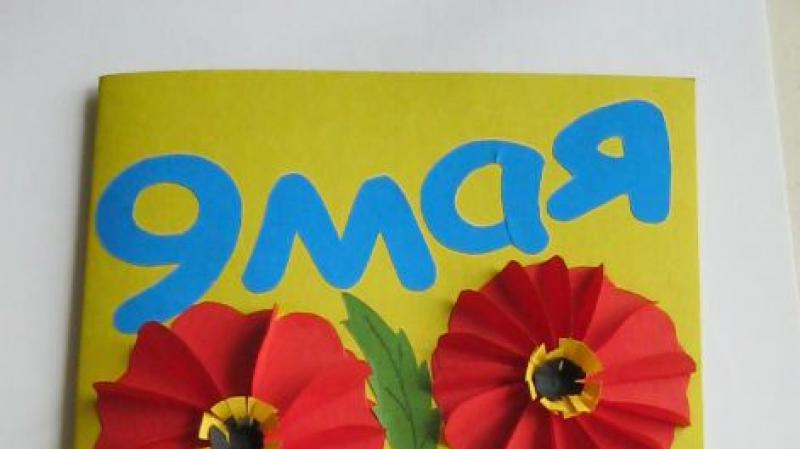Water gel polish manicure at home: a description of the technology, interesting ideas and reviews. How to do a water manicure? Photo and video Water-based nail design
Water manicure is unique technique application and unique mesmerizing patterns! The owner of such a manicure will certainly stand out from the crowd and delight others. Water manicure is done today in any salon, but if you want to experiment on your own and save money at the same time, then this article with instructions is for you!
Pros and cons of water manicure
Advantages:
- original unique design
- the ability to combine different colors and experiment
- since a ready-made design is applied to the nail, it dries very quickly
Disadvantages:
- high varnish consumption
- inability to do a manicure on all nails at once
- large time expenditures
Read our article on how to learn to weave chic
Moon manicure is not an invention of modern society, find out where it originates from, and
What is required for a water manicure

- clear nail polish
- colored varnishes (from 2 pieces of different colors)
- water tank
- toothpick or orange stick
- cool water
- thin scotch tape
- cotton buds
- nail polish remover
For a manicure on water to work, the varnish must be liquid and not quick-drying.
How to do a water manicure
Step 1
Prepare your nails: do your usual manicure (edged, not edged), pay special attention to the cuticle, it must be completely removed. The nail plate should be smooth, then the water-based manicure will look perfect.
Apply a base to your nails - white varnish or varnish of one of the colors that you will use. On white varnish, the manicure will look brighter.
Wait for the coating to dry, tape your fingers with tape so that only the nail is exposed.
Step 2
Pour water at room temperature (no more than 35 degrees) into the container. Many girls choose the temperature empirically - it didn't work out at one temperature, they try another.
Drop a drop of varnish into the water; it should spread to the edges of the container. Drip from a height of no more than 2 cm, otherwise the drop will drown. Add varnish of a different color to the center of the first drop, continue changing colors 3-6 times.
Step 3
Use a toothpick to create the desired pattern in the water (watch the video to understand how to do this). You can draw stars, flowers, spirals or just colorful streaks by swiping a stick from the edges of the container to the center and vice versa. After each line drawn in the water, wipe the stick with a cloth or cotton pad.
Remember: it should take no more than 90 seconds from the first drop to dipping your finger into the water, otherwise the varnish will dry completely.
Step 4
Quickly dip your finger into the water on the resulting pattern, use a toothpick to move the remaining varnish in the water away from your finger without removing it from the water. Gently remove your finger, peel off the tape and clean off excess nail polish cotton swab dipped in nail polish remover.
Step 5
Repeat steps 2-4 for each finger. Secure the manicure with clear polish by sealing the ends. When you learn how to do this kind of manicure quickly, you can dip several fingers at once, reducing the time spent on this process.
What might not work?
Drops of varnish do not spread in water
First, check the temperature of the water, experiment with it, find the optimal one for your varnishes.
Secondly, make sure to use liquid polishes that are thick or quick-drying for a water-based manicure.
If, when dipping your finger into the water, you touch the edges of the container and thereby lubricate the pattern,
use another container with wider edges or add more water.
Your water-based manicure is smeared
Perhaps you take your finger out of the water too quickly, hold it there longer. Carefully remove the remaining pattern in the water with a stick until you remove your finger.
Do not have time to transfer the drawing to the nail - the varnish in the water is covered with a crust.
Check the water temperature: the lower it is, the faster the varnish dries, add hot water.
Read on which makeup brush is for what and how to choose the best one.
Photo of water manicure: ideas for you!
Video tutorials: water manicure at home
Blue green flowers
Red-orange stains
Bee
Black and white
Purple stripes
Pastel rainbow
The original combination of rainbow manicure and black and white water
Water manicure is modern technology nail design, which is widely and widely used by women. The uniqueness of water manicure is due to the unusual marble effect and graceful patterns. The technique for its implementation is rather complicated, but you can do it yourself at home, step by step following the instructions.
Women who first decide to decorate their nails in this way often do not know how to do a water manicure and what is needed for this.

Pros and cons of water manicure
pros
- You can do such a manicure yourself, without contacting nail art specialists, which is very convenient for many girls who do not want to waste time and money.
- The technology allows you to apply any patterns, and provides a wide scope for imagination.
- The water manicure itself is not particularly difficult - it is quite easy to perform.
- The nail polish dries quickly because it is applied in a thin layer.
Minuses
- Despite the fact that the process is simple, it can be called time consuming - in order to make the coating itself, you need to do this for about an hour. The time increases in the case of preparation for a manicure.
- The removal of the cuticle will also be required, which is not always possible to do correctly and well.
- What will really upset some girls, it is impossible to make the desired design on several nails at once.

What varnish is perfect for a water-based manicure?
Varnishes that have thickened strongly are not suitable at all, they will not spread over the water, it is better to give preference to liquid structures. If you urgently need a varnish of a certain shade, and it has thickened, there is an easy way to make it more liquid by adding a couple of drops of solvent to it and stirring well.
It is worth paying your attention to what colors and combinations of varnishes are more harmonious for water design. If you need to create a brighter and more unique water pattern, you can use holographic varnishes. An interesting manicure can be done using varnishes with the property of a thermal effect, as a result, the shade will change under the influence of body heat. To create a unique pattern, you can use several shades. As a result, the design will turn out to be very extraordinary. If you do not have the opportunity to make a beautiful drawing on your own, then you can visit a beauty salon and the master will create a unique pattern for you.
For a more economical use, it is advisable to use narrow dishes. In addition, it is required to use a container with sufficient depth, this will help to avoid nails from scratching the edges and bottom. Then your pattern will definitely not smudge. The water prepared for water manicure should not be cold, otherwise the varnish will spread and harden.
Water manicure at home
Water manicure is quite difficult to perform. The first time you need about 2 hours of free time. In the future, you can do marble manicure on average, half an hour - an hour. You will need a little dexterity, a set of necessary tools and accessories.
- A set of nail polishes: transparent, white, several colors.
- A container with water.
- Scotch or greasy cream.
- Toothpicks (wooden skewers work well)
- Cotton buds or discs.
- Nail polish remover.
If you decide to do a manicure with water, you should remember important rule... Its observance largely determines the success of the entire procedure. The water in the glass must not be hot or cold! The optimum temperature is room temperature or slightly higher, at which the varnish spreads best over the surface.

Preparing nails
Treat your hands with an antiseptic. Tidy up your nails with a classic (edged), European (unedged) or Brazilian manicure. Pay special attention to the cuticle. After all, to do beautiful manicure using water, you need to achieve a smooth and even surface of the nails.
Apply the first coat of clear polish and wait for it to dry. Water manicure involves a contrasting combination different colors... To make the composition brighter and more saturated, we recommend applying a base coat. You can use white or colored varnish that will go into your water-based manicure.
Before the procedure, glue each finger with tape, leaving it open nail plate, as in the photo, or lubricate the skin with a greasy cream to protect against bright pigment. Water manicure has a very unusual technology, and these simple steps will greatly facilitate your task.
Creative process
Place a container of water in front of you. A regular plastic cup will do. It is important that it is not too small, otherwise the nails will cling to the walls, and it will be difficult for you to do a high-quality water-based manicure. If the container is too large, the consumption of varnish will increase significantly. Since manicure is performed with water, foreign components and air bubbles should not be present in the liquid.
Open all jars of colored varnish and prepare toothpicks. Let's say you decide to do a two-tone water manicure. Open the first varnish and bring the brush over a glass to a distance of no more than 2 cm. The droplet should fall into the water. You will see how the varnish spreads. Take the second color and drop it into the center of the resulting divorce. Repeat 6-8 times, alternately changing varnishes.

Each circle of water should flow to the walls of the glass. You can help this process by swiping a toothpick from the first stain to the side of the container. Do not immerse the stick too deep, it should slide in the water.
It's time to dream up! Swipe the toothpick several times over the rainbow, as in the photo. Be sure to clean the stick as it gets dirty. You are literally painting your manicure on the water! Carried away by the process, do not forget about the time. It should take no more than 40-60 seconds from the first drop of varnish to the finished drawing.
When the water pattern is ready, gently lower your nail into a multi-colored rainbow parallel to the plane of the table. The finger should be completely immersed in the liquid. Using a toothpick, use quick twisting movements to pick up excess polish from the surface of the water. Gently remove your finger. Repeat the procedure with each nail separately. To make an aquatic version of nail art, you need to be patient. Any rush can ruin your manicure.
Final chords
You've almost done a water-based manicure at home. Remove the tape or remaining cream and clean the skin with a cotton swab soaked in nail polish remover. Apply a top coat to your nails, but first make sure your water painting is really dry.

Why is something not working out?
You followed all the points of the instructions, but the water (marble) manicure did not work out, or the result does not please you very much? These are the main difficulties that arise in the process of carrying out this procedure.
- Does the varnish drip or curl up? Check fluid temperature. If it is normal, the reason may be too thick varnish consistency. To make a water manicure at home still work out, replace it with a more liquid one.
- Are the patterns on each nail different from each other? Over time, you will learn how to make almost identical drawings, the main thing is to maintain the style of streaks on the water.
- A drop of varnish does not spread, but does it sink? You may be holding the brush too high. Recall that to make a manicure with water, the distance to it should be minimal, no more than 2 cm.
- Is your manicure smeared? Most likely, you get your finger out of the water too quickly, or you don't completely remove the remnants of the rainbow with a toothpick.

How to create an original water design yourself?
It is advisable to start with the lightest decor option. This will require white and black varnishes. but the best way- application of four tones of neon color. For water decor, you can use orange, green, yellow and pink. Any clear spray, such as hairspray, is also needed.
First, the nails are painted with a base coat, then a neon coating should be applied to make the color initially brighter. In order not to stain the skin, you need to stick an adhesive tape in the shape of the letter "p" near the nail. Then the nail plate is visually divided into several zones, which will be covered with various varnishes.
Two drops of a black shade should be added to a container with water, it should spread well. The surface of the water should be sprayed with a spray, then figures of various sizes are formed. The future picture of the manicure will vary depending on the colors used.
Next, you should immerse your finger in water with varnish, and the residues on the water surface are removed with toothpicks. Your design is almost complete. Then the scotch tape is removed, and possible shortcomings need to be wiped off with cotton swabs.
Nails take time to dry. Then you can cover the nails with a fixing layer of a special coating. Such an original and uncomplicated manicure will delight you every day and amaze others.
Which color should you choose?
Bright colors are great for water-based manicure. For such a design, you will need a container where you should pour water, a needle, varnishes of different colors and a napkin. Warm water is poured into a plastic glass, then varnish should be added there. A few drops will suffice. After it spreads in water, a couple of drops of varnish of a different shade are dripped into the glass.
Then you can create your own unique pattern with a needle or toothpick. Movement should be from edge to middle. And then do everything as indicated above. The main thing is not to be afraid to experiment. Every creative idea need to be implemented.
This version of manicure for water based looks impressive and interesting. And charming nail designs will help create a charming look that will not go unnoticed.

If you want to diversify your daily manicure. Then one of the options can be a water manicure. Thanks to the simple technology, it is quite possible to do it at home.
Today, not just nails are considered the ideal manicure. beautiful shape and with an even varnish finish.
A good manicure is a quality creative execution.
Many women believe that beautiful drawings on the nails it is difficult to do that only specialists can do it.
However, this opinion is wrong, there are techniques for applying stunning patterns that absolutely any girl can master. Indeed, in order to master the technology of water manicure, no artistic skills are required, however, the result will amaze with its beauty.
Advantages and disadvantages of water manicure
Recently appeared fashion trends in such a field as nail art, they dictate the so-called marble effect, or water manicure, as it is also called.
This design is obtained using water and several varnish colors.

It looks fantastic and exciting, and you can use it to decorate your nails beautifully. The effect of streaks, spirals and unusual stripes is produced by dissolving the varnish in water.
Consider the advantages and disadvantages of this technique:
pros
- Firstly, it is not necessary to go to the salon for water manicure, this technology is available at home.
- Secondly, it is a wide scope for imagination and imagination. In addition, the ease and simplicity of the drawing technique should be noted. Since a very thin layer of varnish with a ready-made pattern is applied to the nail, it dries quickly enough.
- Well, the last plus is financial savings.
Minuses
However, there are also disadvantages, because everything cannot be so perfect.
- The first disadvantage is the laboriousness of this process. To make such a coating, you will need to spend about an hour, and even more with preparation. In addition, it will be necessary to remove the cuticle, which is also quite difficult, unless you go to a specialist in the salon.
- The second disadvantage is that you cannot design a pattern on several nails at the same time - only on one. A lot of materials are still needed.
However, no matter how difficult it may seem, you can do it. It is worth considering in more detail what is needed for this and the process itself.
- If you like classic French manicure, then you will like new variant this famous manicure -. Recommended. You will not remain indifferent to this manicure.
- Check out the popular shellac option - shellac bluesky. Stability and reliability are the key properties of this manicure, you can learn more with it.
What you need for a water manicure
- So, the first principle of water manicure is as follows.
The cuticle is steamed, after which it is removed with tweezers. Sea salt or herbal decoction perfectly softens the skin. You can also add liquid soap.
This procedure should be performed by a qualified technician, because when circumcising, tweezers are used, which can injure the skin near the finger, and if the wound is disinfected illiterately, the skin near the nails can become infected.
- If you still decide to do a water manicure at home, then here's what you need:
- You will need a plastic and paper cup, but a regular mug will do.
- Pour water into the container to the brim.
- Then you need to take a regular varnish of two (at least) colors and a toothpick.
- In order not to get your fingers dirty, you will need a fat cream (preferably for children) or scotch tape.
How to make a water manicure - step-by-step instructions

- First step.
It is necessary to prepare the nails for water manicure, that is, trim, and then file. To achieve the best effect, a base coat should be applied. Then you need to choose several shades of colored varnish, but the main thing here is not to overdo it. - Second phase.
You need to take varnish and drip one drop into a prepared glass of water. The first drops will spread over the surface of the water. Then you need to take a different shade and drop it into the very center of the glass. And so on until the fantasy ends. Then it will be necessary to form lines on the surface with soft and smooth movements. If you dream up, you get a very beautiful drawing. - Stage three.
The pattern is applied to the nail, but before doing this, you need to prepare your finger for the process so as not to stain it.
- On the finger, you need to apply the cream, which was mentioned earlier, and wrap the finger with tape.
- The nail should be left dry and not wrapped.
- After this preparation, the nail must be placed parallel to the pattern on the surface of the water.
- Then the finger is lowered into the water.
- The remaining excess varnish must be removed with a toothpick.
- After the liquid becomes clear, the finger can be removed from the water. You can see that the pattern is transferred to both the finger and the nail.
It doesn't look very attractive, but it can be easily corrected in the next step.
Scotch tape is removed from the finger or, if a cream was used, the varnish is erased with a napkin.
Since the product is oily, it will not be difficult to wipe off the varnish.
You should wait until the varnish dries and cover the nail plate with transparent varnish.
Secrets of water manicure
To make a manicure unusual, you should know a few secrets. Here is a list of the most basic tips:

Secret # 1
- Before water manicure, you should thoroughly lubricate your hands with a fat cream (or petroleum jelly).
- If the treatment agent turned out to be on the surface of the nail plate, then it should be removed with a napkin, otherwise the varnish will not adhere.
- It is necessary to prepare a container and pour liquid into it, the temperature of which should not exceed 40 degrees. At the same time, the patterns on the nails will turn out to be varied.
Secret # 2
Actually, the principle of this manicure is that the pattern on the nails will be made in the same style.
And this does not mean that it will be identical on absolutely every nail.
That is, the nails will not be the same in any way.
Secret number 3
- You should choose only liquid varnish for such a coating, but you should not dilute it with solvents - this can ruin the varnish.
- Varnishes with a gel structure are also not suitable - they will not spread in water.
Secret # 4
To make the manicure even more interesting and beautiful, it is worth covering the nail plate with a base varnish in advance (most often they use either pastel, light colors, or very bright ones).
If you choose bright shades for the base, then the other colors should be the same colorful so that they do not look faded on the base. But you need to know when to stop. Otherwise, the coating will be sticky.
For the first time, only two shades will work.
Secret # 5
Every time after working with varnish, you need to clean the toothpick with a liquid intended for nail varnish remover.
This will be a reliable guarantee that the drawing will come out beautiful and will not spread on the nail.
Secret # 6
In order to use the varnish economically, you should choose a narrow container.
However, it must be deep, so as not to accidentally touch the edge of the container with a fingernail and not to smear the pattern.
Secret # 7
It is worth noting one more nuance - such a manicure looks best on nails of medium length.
Nails that are too short or too long will not work.
Secret # 8
Holographic varnishes or special varnishes with shimmer - they give a unique effect.
Pastel tones, especially pink-beige, give an incredible resemblance to marble.
Secret number 9
The manicure will turn out to be unusual if you apply varnishes with a thermal effect.
After such a varnish is applied to the nails, its color will change.
You can use one shade or several.
Secret number 10
Black and white water manicure is, it should be said, a rather unusual classic.
- A stunning technology for creating an unsurpassed manicure available to everyone - a manicure with a sponge. Read more about this in our article.
- One way to diversify your daily manicure is to do a manicure with scotch tape. The simplicity and originality of this manicure is limited only by your imagination.
- An interesting version of a manicure that looks both unusual and rich - gradient manicure... You can easily create your own unique version of this manicure. More details on the link:
Possible mistakes when creating water-based nail designs

- If, when lowering her finger into the water, the girl constantly touches the walls of the cup with her fingernail, then the container is chosen incorrectly.
- If the droplets of varnish do not spread in the water, which is why the drawing does not work, then the varnish is not liquid enough. In the event that the varnish is almost immediately covered with a crust on the water, you need to change the water to a warmer one. Otherwise, you will not be able to draw a line with a toothpick.
- It happens that the drawing cannot be done - the third or second lines come out indistinct and blur the composition. Here you need to remember that it is necessary to clean the toothpick every time, and draw the actual lines with the tip. The maximum amount of toothpick you can immerse is 5 mm.
From everything that was listed just above, one can understand that the technology of water manicure, although laborious, but the result is very beautiful. It will take enough time to make it. But if you try, then everything will work out.
Water manicure: video instruction
If you prefer water-based manicure, you can use different techniques both for your own and for false nails and do it yourself at home.
Svetlana Markova
Beauty is like precious stone: the simpler it is, the more precious!
Content
Have you noticed how diverse, colorful modern manicure has become? Now, in order to please yourself and amaze others with the original pattern on the nails, you do not need to visit expensive salons. A few simple recommendations will help you cope with this on your own by making a water manicure at home. Prepare everything you need, be patient, start that interesting creativity.
What you need for a manicure
Before making a beautiful manicure at home, you need to prepare your nails: remove the cuticles, softening them aromatic oils or by steaming in a sea salt solution. Then shape the nails using a file or, if necessary, sanding. Remember: unkempt nails will negate all your efforts to create the most exquisite patterns and unique coatings.
To have everything at hand for doing water manicure at home, prepare the following materials and tools:

- dishes, better transparent;
- clean water with a temperature not higher than 38-40 ° С;
- base for varnish;
- transparent fixer;
- nail polish of two colors or more - at your discretion;
- toothpicks;
- nail polish remover;
- oily cream, tape or glue to protect the skin around the nail plate.
How to do water nail art at home: step by step instructions
Style is an important component of the image, therefore it will not be superfluous to mention the colors. So, what kind of varnish do fashionistas need:
- For lovers bright manicure varnishes of contrasting colors are recommended, patterns with them have clear transition lines and a more pronounced pattern.
- For those who prefer "marble" coatings, the shades of one colors... For example, the use of blue, turquoise, emerald gives a delicious malachite tone. Also, an interesting manicure is obtained by mixing pink and powdery shades - very delicate, romantic drawings are obtained.
Having checked again the temperature of the water, having opened the bottles, you can begin to study the principle of creating a manicure:

- Protect your skin in any way you like. In most cases, a thick cream or petroleum jelly is used, applied in a thick layer. The use of scotch tape is also effective, but laborious, and after removing it, sticky marks remain on the skin. Russian women of fashion apply glue, which provides a dense, elastic film, and then it can be easily removed. It is important that the protective agent does not leak onto the nail plate, otherwise the varnish will not spread evenly.
- The next step is to apply a transparent base or white varnish, which will emphasize the brightness of the main pattern. Wait until the coating is completely dry.
- Start creating your own unique manicure in water at home: put the first drop in a container of water and wait a little. After it spreads, drop a different color of varnish into the center of the spot. Repeat the procedure 5-10 more times.
- Use a toothpick or the tip of a wooden stick to create a pattern. In this case, after each dipping of the tool, it must be wiped with a cotton pad or cloth.

- Bending your hand and finger so that the nail plate falls parallel to the water surface, dip the nail. Pull it out slowly so that the pattern lies evenly, while the remaining varnish is removed with a toothpick while still in water. This is done with all the nails in turn.
- After final drying of the coating, remove the protective layer from the skin around the nail and clean it with a cotton swab slightly moistened with nail polish remover.
- If desired, sparkles, rhinestones are applied to the manicure, additional details are added to the resulting pattern. At the end, the marigolds should be covered with a fixative.
Possible mistakes when creating a manicure
Sometimes, at first, something goes wrong, especially if you have never done nail art at home before. Here is a list of common problems and how to fix them:
- A drop of varnish does not blur, but sinks. The reasons for this are inappropriate water temperature or the brush is located above 2 cm from the surface of the water.
- Spreading spots do not gather well into patterns and are difficult to apply. The problem is the quick drying of the composition, so it is easier to work with liquid varnishes. It is difficult to make drawings on the surface of too warm water, but at cold temperatures any varnish will dry very quickly.

- Unsuitable container. When doing water manicure on your own at home, it is more convenient to use wide bowls, but in this case, the consumption of varnish increases. However, it is difficult to gently lower your finger into a narrow glass.
- Fuzzy drawing lines. This is due to a poorly cleaned toothpick, on which particles from the previous mixing remain. Just wipe down the instrument thoroughly before each dive.
- Uneven distribution of varnishes of different colors. The reason is the different structure, the density of the varnishes used. To obtain quality manicure with water, you will need fresh varnishes, preferably from one manufacturer.
Video tutorials: water manicure technique for beginners
Having received some theoretical knowledge about the correct application of water manicure, watch short videos that will help you better consolidate the acquired skills and independently go through each stage of the work. In addition, a visual image will help you navigate the choice of colors of varnishes used, will introduce you to the basic techniques for creating popular patterns and unique designs. At first, you may not be as smart as experienced craftswomen, but you will get inspiration and ideas for manicure.
The nail industry does not stand still, every few months experts come up with new technologies for dyeing and design. Fashionable novelties instantly win recognition from beautiful ladies. Girls adopt stylish ideas wanting to perform the procedure at home. One of the trends in the nail industry is water manicure. The striking design will not go unnoticed, it is only important to follow the practical recommendations and follow the instructions.
Required materials and tools
- glass nail file of fine abrasiveness;
- bowl or container with a depression;
- cosmetic tampons, cotton swabs;
- base for colored coating;
- finishing varnish;
- 2-4 colored varnishes of liquid consistency;
- skewer, thick needle, or toothpicks;
- fat cream, scotch tape or electrical tape;
- Acetone-free nail polish remover.
Water manicure technology
- The main feature of water manicure is preparatory stage... The surface of the nails should be perfectly smooth, level it with a glass file. Disinfect your hands, remove the cuticle in a convenient way and shape the nail plate.
- Cover your nails with a colorless base, wait for the first coat to absorb and apply the second. Alternatively, you can apply a colored or white base in a second layer, this move will make the design brighter.
- Water manicure is distinguished by the specifics of the conduct. To facilitate the task and carry out the procedure correctly, take scotch tape or electrical tape. Cut them into wide rectangular strips and glue the area around the nail plate. Lay the strips one on top of the other to repeat the semicircle as much as possible. Make sure that the skin on your fingertips is also protected. If you don't want to bother with electrical tape or scotch tape, use an ordinary fat cream (it is allowed to use a baby cream). Apply it liberally to the area around your nails, avoiding the plate.
- Take a deep bowl and fill it with filtered water at room temperature. Be careful, if you use hot or too cold water, the manicure will not work.
- Preparing the composition of the day of the procedure requires perseverance and attention to detail. Prepare several colored varnishes, shake and take the first one. Put the mixture on a brush and bring it to the center of the bowl, a drop should fall into the water. Wait 10-15 seconds until it spreads over the surface.
- Open a bottle with a different color, put varnish on a brush and position your hand so that a drop falls into the center of the formed circle from the first shade. Wait a while until the composition spreads.
- Take the next shade of varnish and repeat the previous manipulations. Aim the drop towards the center of the last color used. After all shades have been mixed, wait 20 seconds.
- To make the color saturated, you can increase the number of drops, for example, add them not once, but 3-4 times. In this case, it is not necessary to drip them into the center (if the number is more than 1), create a drawing by chaotic mixing. If the composition does not spread well in water, draw a thick needle along the tangent to the edges of the bowl.
- Start creating the pattern. If you want to create a star-shaped pattern, place the toothpick evenly in the center of the resulting varnish surface. Draw the first line to the edge, pull it out of the water. Return to the center again, draw a second line to the edge (the distance between the lines should be at least 1.5 cm). Repeat the steps until you get the desired result. Do not immerse the toothpick deep in water, only work with the tip. Clean the stick after each line you draw.
- To create a floral pattern, place a toothpick at the edge of the bowl, touching the sides of the bowl. Slowly move your hand towards the center, hold for 2 seconds and carefully pull out the device. Enter from the other edge in the same way, again lead with the tip to the center. After each line you draw, wipe the toothpick with a cotton pad and nail polish remover.
- After correcting the pattern, you can start transferring it to your nails. Start by working the little finger, one by one moving to the rest of the fingers. Place your fingernail parallel to the varnish surface and slowly immerse your finger in the water. At the same time, place a toothpick in the container and wrap the excess varnish on it so that the drawing lies evenly on the plate. If you want an eccentric pattern, lower your nail perpendicular rather than parallel.
- With your hand out of the water, begin gently peeling off the tape / tape. Be careful not to touch the nail plate, otherwise you will have to redo everything. After removing the sticky protection, clean your skin with nail polish remover and a cotton swab.
- Transfer the pattern to the rest of your fingers, then move on to processing the other hand. At the end of the manipulation, cover the plate with a colorless finishing varnish to increase the brightness. If desired, it is allowed to use a shimmering base, sequins, rhinestones and small sequins. Experiment!

- Choose a bowl that is wide and tall. Otherwise, there is a risk that you will touch the edges and start over each time. It is also not uncommon for girls to spill the contents onto their clothes in a hurry.
- In spring and summer, give preference to bright shades of the base for water manicure. It can be yellow, red, light green or blue. In winter and autumn, limit yourself to delicate pastel colors, pink or white.
- When you run your finger through the water, be sure to pick up any remaining coating with a toothpick. Such a move will prevent the drawing from spreading and will make the contours of the flower / star clear, not blurry. Otherwise, the leftovers will lie on top of the main pattern and overlap it.
- Water-based manicure can also be performed on long nails. The technology looks beautiful if you lower only the free edge of the plate into the composition. To make the transition clear, stick the strips for French manicure on the nail and fix them with electrical tape or tape.
- Do not immerse your fingers in deep water, always protect your skin. To remove polish from the cuticle, use the tip of a toothpick to draw out a semicircle. Also, a toothpick can be replaced with a glass nail file, its edge is not sharp and suitable in width.
- To prevent the varnish from spreading on the treated nail, carry out the procedure one by one. Lower your first finger first, collect the excess, clean it and leave it flat until it dries completely. Only then proceed to manicure the rest of the nails.
- If you are left-handed, start with your right hand. If right-handed - on the left. This is especially true for girls who have no experience in nail design.
- Do not overdo it with water soaking. It is necessary to prepare the composition for no longer than 1.5 minutes, after this time the colors begin to mix and the pattern is blurred. Try to quickly drip the composition and display a pattern on it.
- For water manicure, only liquid varnishes are used, which spread in a short time. If for some reason you have thick ones, add 4-6 drops of nail polish remover to the water. You can also pour it into the base bottle itself, but in this case, you risk ruining the varnish.
- Give preference only to the professional series of products. As a rule, their consistency is monotonous, such varnishes are suitable for each other in chemical characteristics and last longer on nails.
- Pour only room temperature water into the container. If the liquid is too cold, the varnish will not creep in it, and if it is hot, it will curl up.
- Ladies who prefer shellac to conventional varnishes are not prohibited from using it in water-based manicure. To do this, first degrease the plate and cover it with a base under the main surface. At the end of the procedure, dry the drawing in a UV lamp until completely dry.
Prepare necessary tools and materials. Always clean the toothpick after drawing lines to avoid mixing colors. Do not delay the preparation of the composition, otherwise the drawing will be blurry. Start with the little finger, gradually moving towards the rest of the nails.
Video: water manicure at home
Finversion financial inversion Financial information portal














